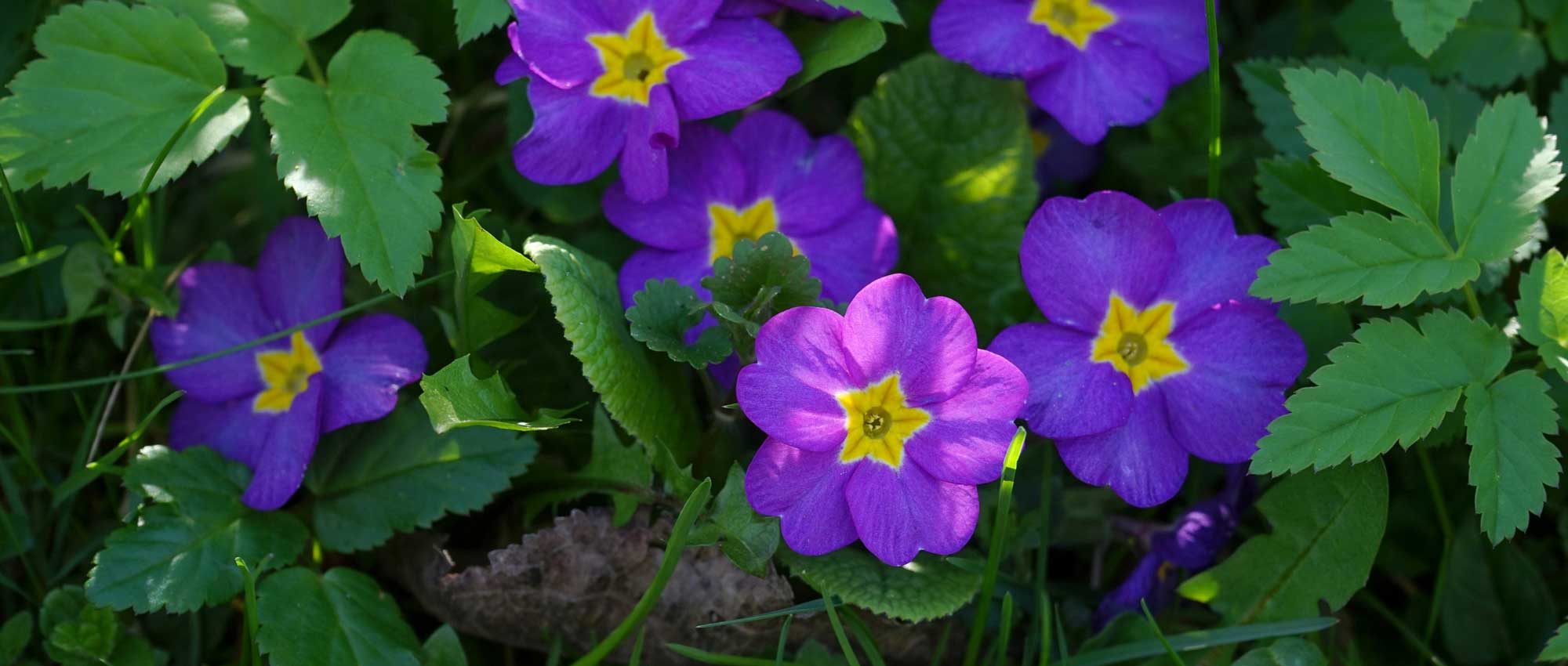
Primroses: 7 ideas for garden companions
Our ideas and inspirations
Contents
The primrose is a perennial plant that usually flowers very early in late winter, although there are species that flower in summer. Hardy and easy to grow, it will thrive if you plant it in partial shade in cool, well-drained soil. It is often small in size, but some species can grow quite tall when in bloom! For instance, the candelabra primroses have a very airy flowering, giving them a wild and light appearance, adding volume to a flowerbed, which is not the case for the Auricula or acaulis primroses.
Primroses have the unique characteristic of either being extremely colourful and vibrant or very natural and delicate (botanical primroses). Depending on the chosen variety, their use will be quite different! In the first case, they will pair well with other annuals or perennials with colourful blooms for a very neat and controlled flowerbed. In the second case, they will find their place in a naturalistic flowerbed, among lush foliage in a garden left much wilder.
The acaulis and auricula primroses are very colourful and allow for endless combinations! We recommend using them sparingly, as these bright colours can be overwhelming and dominate the space. In contrast, if you grow Primula denticulata or Primula sieboldii, their soft hues bring calm and romance. Pair them with other plants in pastel tones.
With other spring flowering plants
Enjoy the early flowering of Primroses to celebrate the end of winter by bringing plenty of colour to your garden! You can combine species that bloom as early as February or March (Primula veris or Primula acaulis) with other perennials and spring-flowering bulbs: tulips, daffodils, or crocuses. This will create a garden rich in colours very early in the season. For example, plant Primula acaulis with muscari. When used sparingly, they will provide you with a beautiful scene of vibrant colours while maintaining a natural and wild appearance. You can also pair your primroses with some Oriental Hellebores, Violets (Viola odorata), or Winter Aconites.
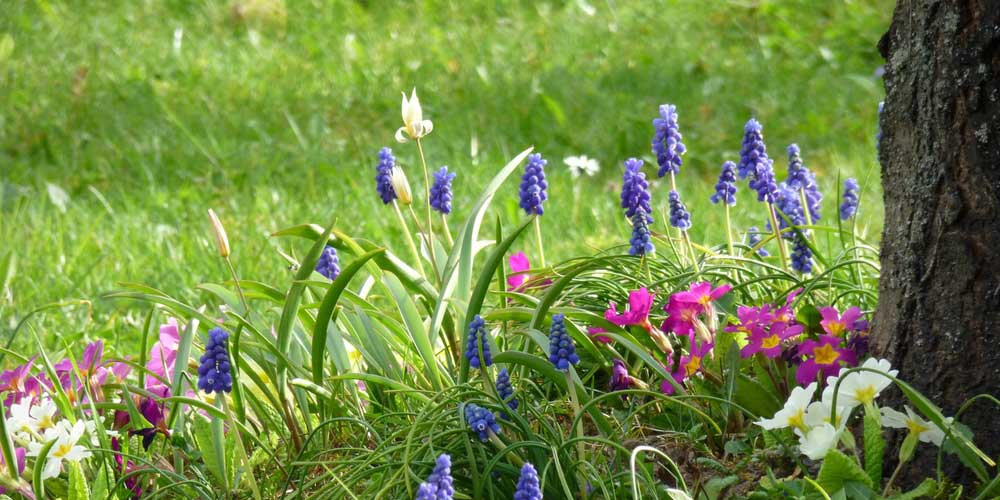
Stemless Primroses, Muscari, and Tulips
For a shady and cool garden
Create a garden at the edge of a woodland. Place hydrangeas or rhododendrons in the background to add volume. Plant some primroses, scillas, and cyclamens (for example, Cyclamen coum Rose) in front of them. You can also take advantage of the decorative foliage of ferns, rodgersias, and hostas. Choose species such as Primula vialii or Primula bulleyana: they particularly enjoy shaded mediums and cool soils!
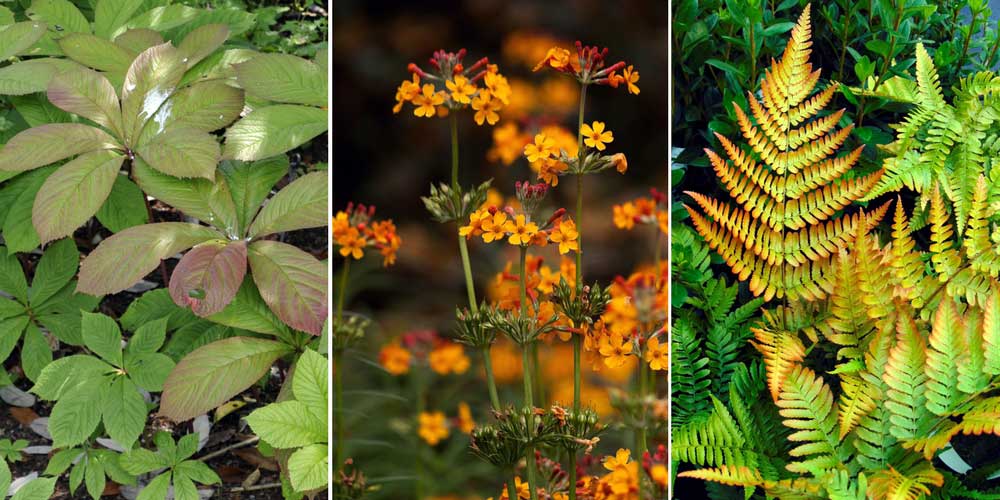
Rodgersia pinnata, Primula bulleyana, and Dryopteris erythrosora
Discover other Primula - Primroses
View all →Available in 0 sizes
Available in 1 sizes
Available in 1 sizes
Available in 1 sizes
Available in 1 sizes
Available in 1 sizes
Available in 1 sizes
Available in 0 sizes
Available in 1 sizes
Available in 0 sizes
For a naturalistic border
To create a garden with a very natural and wild appearance, opt for botanical species! You can choose primroses that grow spontaneously in France, such as the Cowslip (Primula veris). Asian primroses with their tall flower spikes create a beautiful effect in naturalistic beds, provided the soil is moist! You might consider Primula secundiflora with its very light and delicate pink flowering. Don’t hesitate to combine the denticulate primrose (Primula denticulata) with other plants that have a free habit and airy flowering! You can also try Primula vialii with its violet-red inflorescences. Pair the summer flowering of these Asian primroses with Alliums, Astrances, Grasses, or Agastaches. There is a good chance that these botanical primroses will self-seed and naturalise in the garden!
Get inspired by this atmosphere.
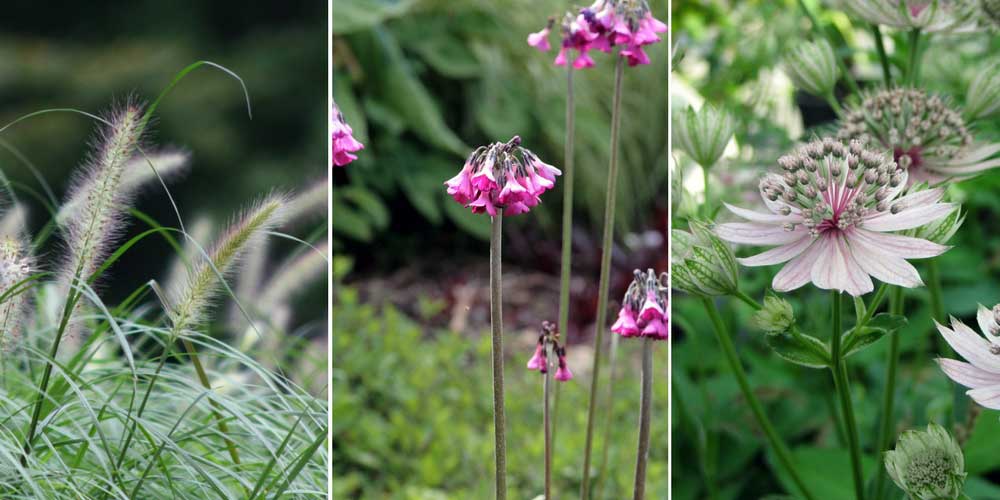
Pennisetum alopecuroides, Primula secundiflora and Astrantia major ‘Rosea’
Read also
How to divide primroses?By the pond's edge
Create a beautiful scene by the water’s edge, combining candelabra primroses (such as Primula bulleyana with its orange flowering, or Primula beesiana which blooms pink) with the stunning foliage of ferns and hostas. They will add vibrant splashes of colour to a lush green setting. If you have enough space, plant a few gunneras with their spectacular foliage. You will then transform this corner of the garden into a true haven of peace where you can come to recharge! Also enjoy the purple flowering of Primula japonica or the yellow of Primula florindae, two species that thrive in moist soils. Primula vialii will also thrive there, provided you do not plant it too close to the water.
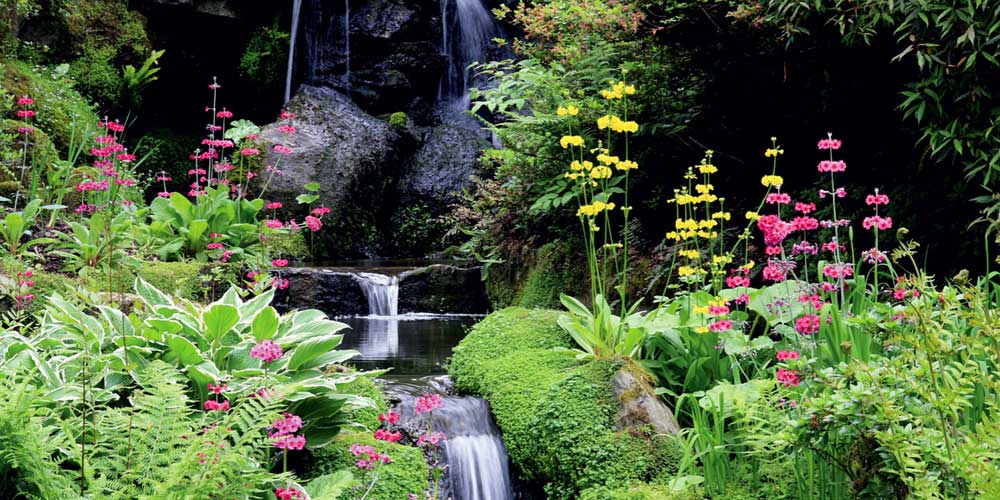
Candelabra primroses thrive in cool to moist soils, where you can plant them alongside hostas and ferns.
To create a flowering container or in a window box on a balcony
To create a floral composition, avoid Asian primroses! They are tall and prefer moist soils. Instead, choose from the many varieties of Primula auricula or Primula acaulis. Plant them in small groups, mixing the varieties, alongside some small perennials, such as Pansies, Arabis, Heucheras or Iberis sempervirens, and grasses (for example, Carex). You can also plant them alongside bulbous plants: Tulips, Daffodils, Grape Hyacinths, Hyacinths…
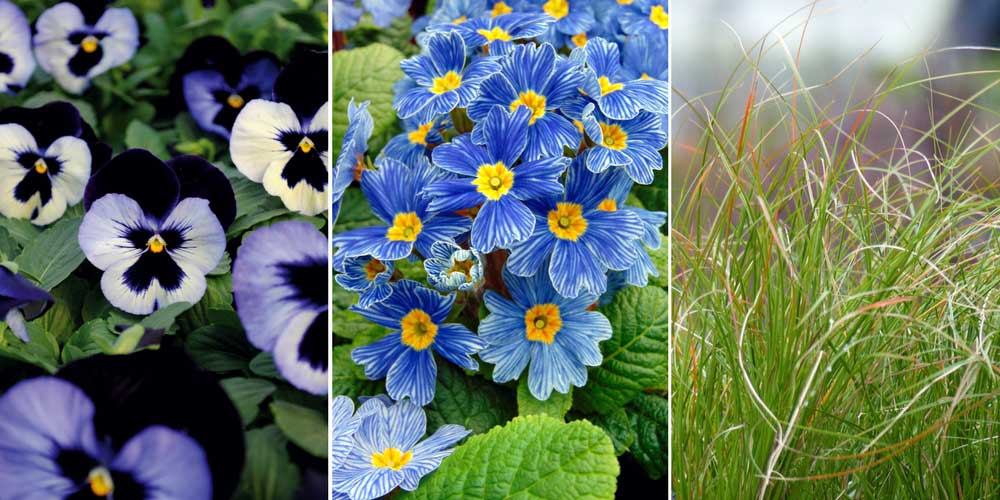
Viola wittrockiana ‘Alpha Moonlight’, Primula acaulis ‘Zebra Blue’ and Carex testacea
With other plants in softer tones
With very bright shades, auricula and acaulis primroses can have their flowering softened by pairing them with white flowers or decorative foliage. For example, you can plant a few young plants of Primula x elatior ‘Crescendo’ alongside snowdrops (Galanthus nivalis) or white tulips (such as Tulipa fosteriana ‘Purissima’). Also, combine your primroses with ferns or grasses, as they will further enhance their vibrant flowering!

Galanthus nivalis, Primula vulgaris (hybrids) and Dryopteris cycadina
In rockery
Some primroses are perfectly suited for rock gardens. These mainly include alpine species, such as Primula auricula or Primula marginata (less common in cultivation). Primula auricula comes in a wide range of colours and often offers a remarkable, highly contrasting flowering display. Plant it in partial shade, sheltered from direct sunlight. Place small conifers in the background and position Primula auricula in front of them, accompanied by saxifrages, houseleeks, aubrietes, and stemless gentians.
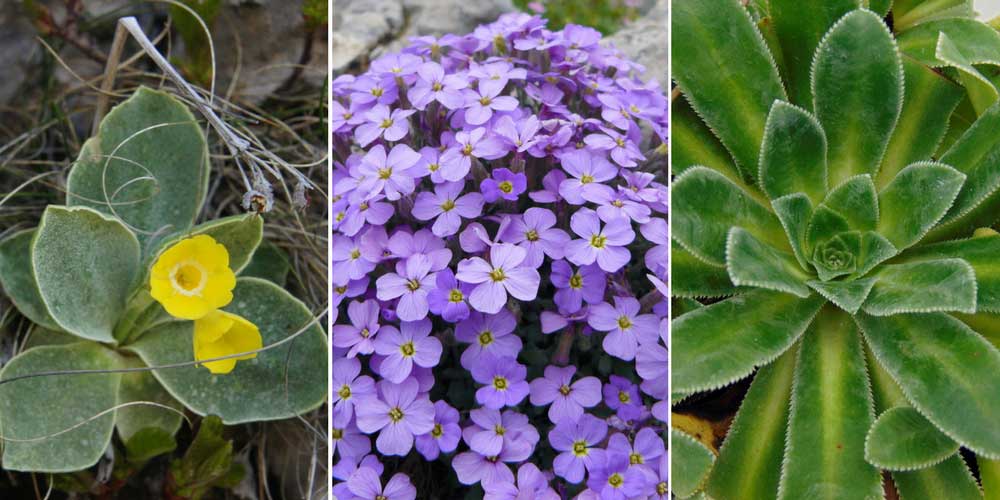
Primula auricula (photo Benjamin Zwittnig), Aubrieta ‘Novalis Blue’ and Saxifraga cotyledon ‘Southside Seedling’
- Subscribe!
- Contents
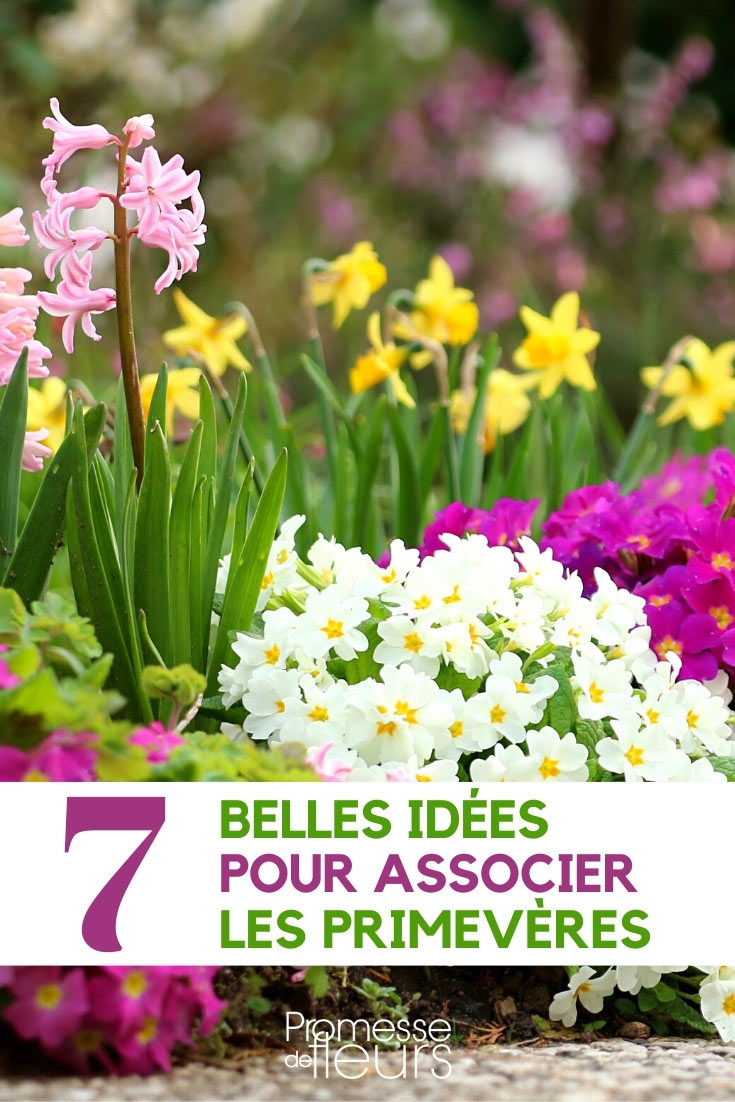
































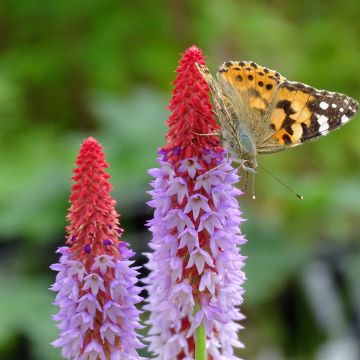
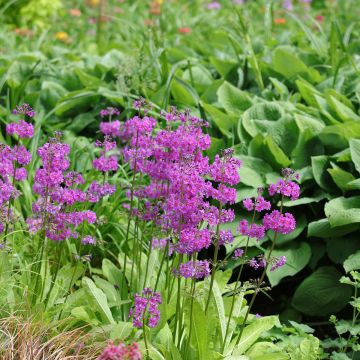
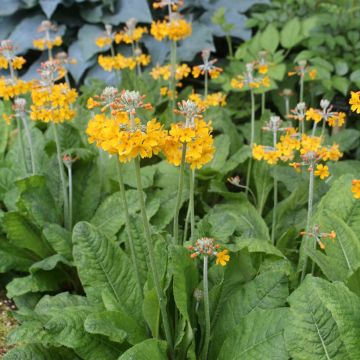
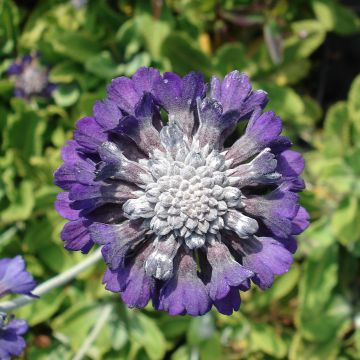
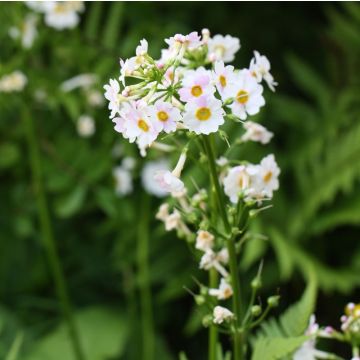
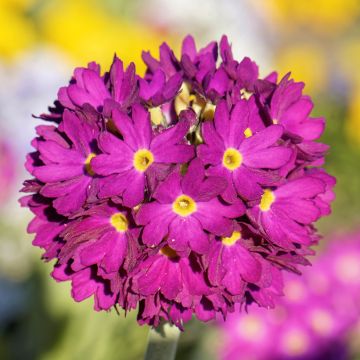
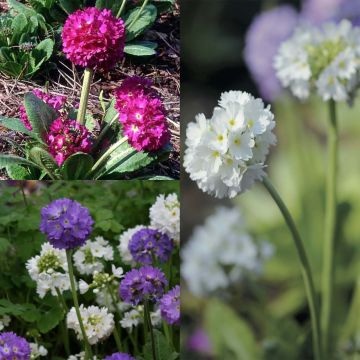
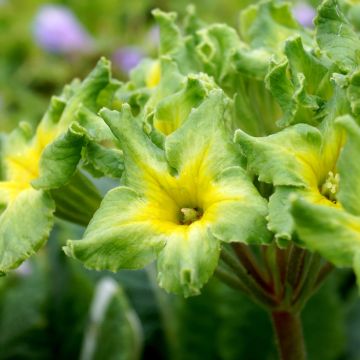
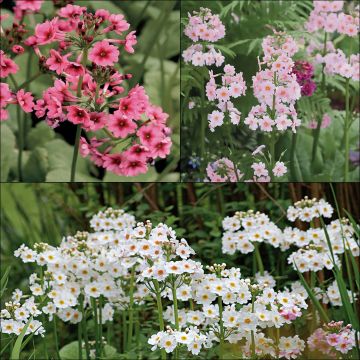
Comments